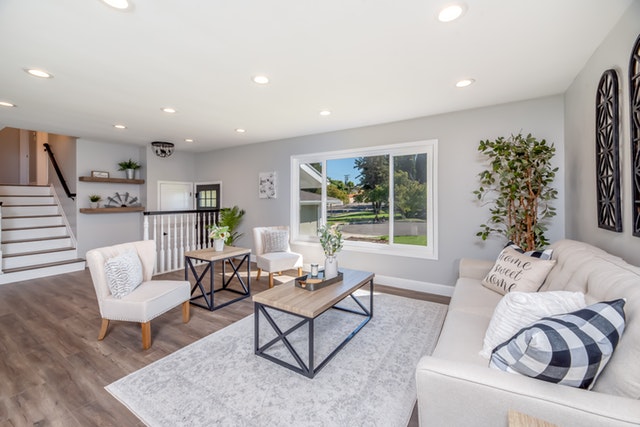 Did you realize that only around 17 percent of the homes in the United States have a security system? Leaving your residence unprotected can come back to haunt you in the future.
Did you realize that only around 17 percent of the homes in the United States have a security system? Leaving your residence unprotected can come back to haunt you in the future.
The longer you wait to find and fix security problems, the harder you will find it to keep your family safe. Taking the time to inspect your home is a great way to see where security problems exist. With the help of the checklist in this article, you can secure your home and keep burglars at bay.
Check Your Existing Security Alarm
If your home does have a security alarm, you need to make sure it has all of the latest features and updates. Some homeowners think that a security alarm is something they can set and forget.
One of the main things you need to make sure your alarm has is monitoring. With monitoring, you will be able to get the authorities to your home in a hurry in the event of a burglary.
The key to getting the right monitoring is working with the right security company. Before using a particular company, find out more about how they will monitor your home. Paying a bit more for high-quality monitoring will be worth it considering the safety it will add to your residence.
Check Your Windows and Doors
As you inspect your home, be sure to pay close attention to your doors and windows. Usually, these are the areas that a burglar will target when trying to break into a home. If the windows or doors are old and not working properly, it can put you and your family in a lot of danger.
This is why replacing damaged doors and windows is so important. You may also want to think about adding window alarms to your home. With these alarms in place, burglars will not stand a chance when trying to gain access to your residence. An experienced security company will have no problem installing these window alarms for an affordable price.
New Outdoor Lighting is a Good Idea
Another factor you should pay attention to when inspecting your home is the condition of the exterior lighting. If there is limited illumination on the outside of your home, you need to fix this immediately. Leaving the outside of a home dimly lit is like sending an invitation to burglars. This is why investing in high-quality landscape lighting is a good idea.
Things like motion-sensor lights can help you keep burglars away. Instead of trying to find and install these lights on your own, you need to hire professionals. They will be able to get the new lights in place in a hurry.
They can also help you choose the right places to put these lights.
A Great Investment
Instead of looking at additional home security as something you have to do, you need to view it as something you want to do. The money you invest in better home security will be worth it in the long run.
 One of the most common worries that people have is money. When it comes to those golden retirement years, many people worry about running out of money. At the same time, most people who reach their retirement years have a lot of equity in their home.
One of the most common worries that people have is money. When it comes to those golden retirement years, many people worry about running out of money. At the same time, most people who reach their retirement years have a lot of equity in their home. Millennials are a huge socio-demographic group of over 83 million people. Many of them want to buy a home but face challenges that their parents did not necessarily have. Homes are more expensive. In most places, home prices rebounded to exceed the pre-2008 economic collapse values. Moreover, home prices continue to go up.
Millennials are a huge socio-demographic group of over 83 million people. Many of them want to buy a home but face challenges that their parents did not necessarily have. Homes are more expensive. In most places, home prices rebounded to exceed the pre-2008 economic collapse values. Moreover, home prices continue to go up. Last week’s economic reports included readings from Case-Schiller Home Price Indices and National Association of Realtors® data on pending home sales. The Conference Board of the U.S. Senate also released its Consumer Confidence Index. Weekly readings on mortgage rates and first-time jobless claims were also released.
Last week’s economic reports included readings from Case-Schiller Home Price Indices and National Association of Realtors® data on pending home sales. The Conference Board of the U.S. Senate also released its Consumer Confidence Index. Weekly readings on mortgage rates and first-time jobless claims were also released. Commuting for hours in traffic on a daily basis is a waste of resources, time, and money. It is stressful and bad for the environment. The infrastructure in many parts of the United States is falling apart. The roads and highways do not have sufficient capacity to handle the demands of the traffic load that continues to increase each year. Many busy professionals and families are turning to a solution of owning two homes for the convenience of enjoying dual-location living.
Commuting for hours in traffic on a daily basis is a waste of resources, time, and money. It is stressful and bad for the environment. The infrastructure in many parts of the United States is falling apart. The roads and highways do not have sufficient capacity to handle the demands of the traffic load that continues to increase each year. Many busy professionals and families are turning to a solution of owning two homes for the convenience of enjoying dual-location living. One of the dreams that many people have is to eventually retire. People work their entire lives and save diligently to be able to enjoy those golden years. When the time finally comes, people need to think about the community that is right for them. With this goal in mind, there are a few common questions that everyone should ask to find their ideal retirement community.
One of the dreams that many people have is to eventually retire. People work their entire lives and save diligently to be able to enjoy those golden years. When the time finally comes, people need to think about the community that is right for them. With this goal in mind, there are a few common questions that everyone should ask to find their ideal retirement community. Last week’s economic reports were limited due to the Christmas holiday. New home sales data was released along with a weekly reading on mortgage rates.
Last week’s economic reports were limited due to the Christmas holiday. New home sales data was released along with a weekly reading on mortgage rates. Sellers of homes often make mistakes that are not in their best interests. Here are common mistakes people make when selling a home and how to avoid them.
Sellers of homes often make mistakes that are not in their best interests. Here are common mistakes people make when selling a home and how to avoid them. Owning property comes with a number of major responsibilities. This includes home maintenance and repairs. One of the common topics that people think about is the garage door. Sometimes, the garage door breaks and needs to be replaced. Other people might be adding a garage door for the first time. There are lots of options to choose from and this is an important decision.
Owning property comes with a number of major responsibilities. This includes home maintenance and repairs. One of the common topics that people think about is the garage door. Sometimes, the garage door breaks and needs to be replaced. Other people might be adding a garage door for the first time. There are lots of options to choose from and this is an important decision. For those who are interested in learning more about real estate, property management companies are an important topic of discussion. Some people might not ever consider hiring a property management company.
For those who are interested in learning more about real estate, property management companies are an important topic of discussion. Some people might not ever consider hiring a property management company.